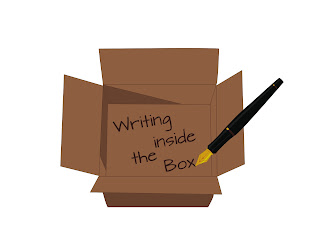Some places speak distinctly. Certain dank
gardens cry aloud for a murder; certain old houses demand to be haunted;
certain coasts are set apart for shipwrecks. ~Robert Louis Stevenson
Writing is my time machine, takes me to the
precise time and place I belong. ~Jeb Dickerson
For me, a page of good prose is where one hears
the rain [and] the noise of battle. ~John Cheever
Every story would be another story, and
unrecognizable if it took up its characters and plot and happened somewhere else...
Fiction depends for its life on place. Place is the crossroads of circumstance,
the proving ground of, What happened? Who's here? Who's coming?” – Eudora Welty
qtd. in “Setting”
Setting is vital, and yet it’s value often goes
unnoticed. I mean this in a few ways.
First of all, think of how many television shows
feel the same, only they are set in different places. (It’s like Friends, only they put the hip singles
in California.) Now think of television shows where the setting makes up the
plotline in many episodes. Where the characters are affects their actions and
natures. These shows generally do better, because if the setting is a member of
the cast, it makes the stories more authentic.
Secondly, many readers don’t even notice a
well-written setting. When you read a story and experience it with your
senses—you can see, hear, smell, taste, and touch—then the author probably did
an excellent job of placing you into the time and place of that story.
Thirdly, sometimes the setting becomes almost like
another character in the story. This is when the place takes on a personality,
or perhaps is central enough in the story that it holds more significance to
the overall tale than being a simple backdrop.
William Zinsser says, “People and places are the twin
pillars on which most nonfiction is built” (116). I believe this philosophy
relates to fiction writing as well.
Setting is important both when it is a real or made up
place. Some of the most important settings from our youth were fantasy lands
that we will always hold as being real, in some way, because of how real the authors made them. Hogwarts,
Neverland, Narnia, Middle Earth, Wonderland, The Secret Garden: these were
places we could travel only through the pages and in our minds. It takes a true
artist to create such a place from dreams and imaginations.
It also takes a true artist to write about an actual spot on
the map, whether by naming it directly or giving it a fictional title: perhaps
to protect the innocent and not-so-innocent. Some authors are blessed with the
ability to write about a real place in such a way that people who have been
there recognize it and people who haven’t feel as though they have.
And then there is the spot that could exist in reality, but doesn’t exactly. It could be a little country town in
Tennessee, but you won’t find it on Mapquest.
Neither method of setting writing—creating a fantasy world,
accurately portraying a real location, or making up an artificial setting that
seems actual—is better. The key is, whichever you pick to do, do it well.
Make sure the setting fits the characters, fits the plot:
that the characters fit the plot in this
setting.
Give the setting the appropriate amount of attention. I hear
often from students, “I didn’t like (such and such author’s name here) because
he took an entire chapter to describe a hillside.” In a time before television
and the other million forms of at-our-fingertips entertainment we now have,
this chapter was probably read greedily. Besides, now we can Google a place and
the word “hillside” and see in seconds what it would have taken an author a
while to describe well.
But maybe an entire chapter description is a bit much
now-a-days.
Still, don’t forget this second “pillar” of literature.
When writing about your story’s setting, you can consider
the elements of setting illustrated below. Some authors give details on all
these elements; some give only a few. You have to decide how much your writing
needs. Just make sure you describe the setting enough to provide relief and
reality for your characters, and for your readers.
visual by the ever-talented Whitnee Webb
References
Cheever,
John. “Writing.” n.d. Quotegarden.com. 28
May 2011 < http://www.quotegarden.com/writing.html> .
Dickerson,
Jeb. “Writing.” n.d. Quotegarden.com. 28
May 2011 < http://www.quotegarden.com/writing.html> .
“Setting.”
n.d. Learner.org. 25 September 2008
<http://www.learner.org/interactives/literature/read/setting1.html>.
Stevenson,
Robert Louis. “Place.” n.d. Quotegarden.com.
28 May 2011 <http://www.quotegarden.com/places.html> .
Zinsser, William. On Writing Well. 7th ed. New York: HarperCollins, 2006. Print.
10 Settings You Should Experience, and not just
from watching the movie
- Narnia by C.S. Lewis
- Peter Pan by J.M. Barrie
- Yaknapatawpha County by William Faulkner
- Wonderland by Lewis Carroll
- Mrs. Piggle Wiggle’s upside down house
by Betty MacDonald
- Nebraska as revealed by Willa Cather
- Klickitat Street by Beverly Cleary
- Ashbury and Brookfield High in Australia
by Jaclyn Moriarty
- The English Landed Gentry shown by Jane
Austen
- Walden by Thoreau
Possible Assignments
1) Pick
a setting you have read in a short story and write down the elements of setting used.
2) Take
a picture of a place (one you know, one you don’t know, or one that isn’t real),
and create a short writing in which you develop a moment in time that also
develops a description of the setting, exploring some of the elements of
setting from the visual in this chapter.





